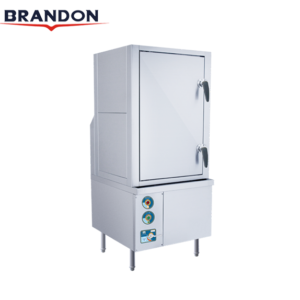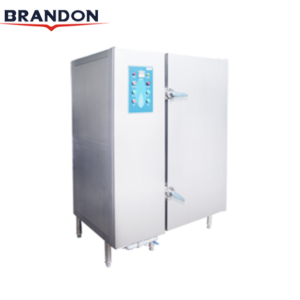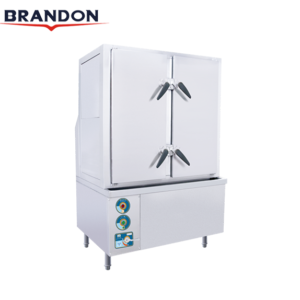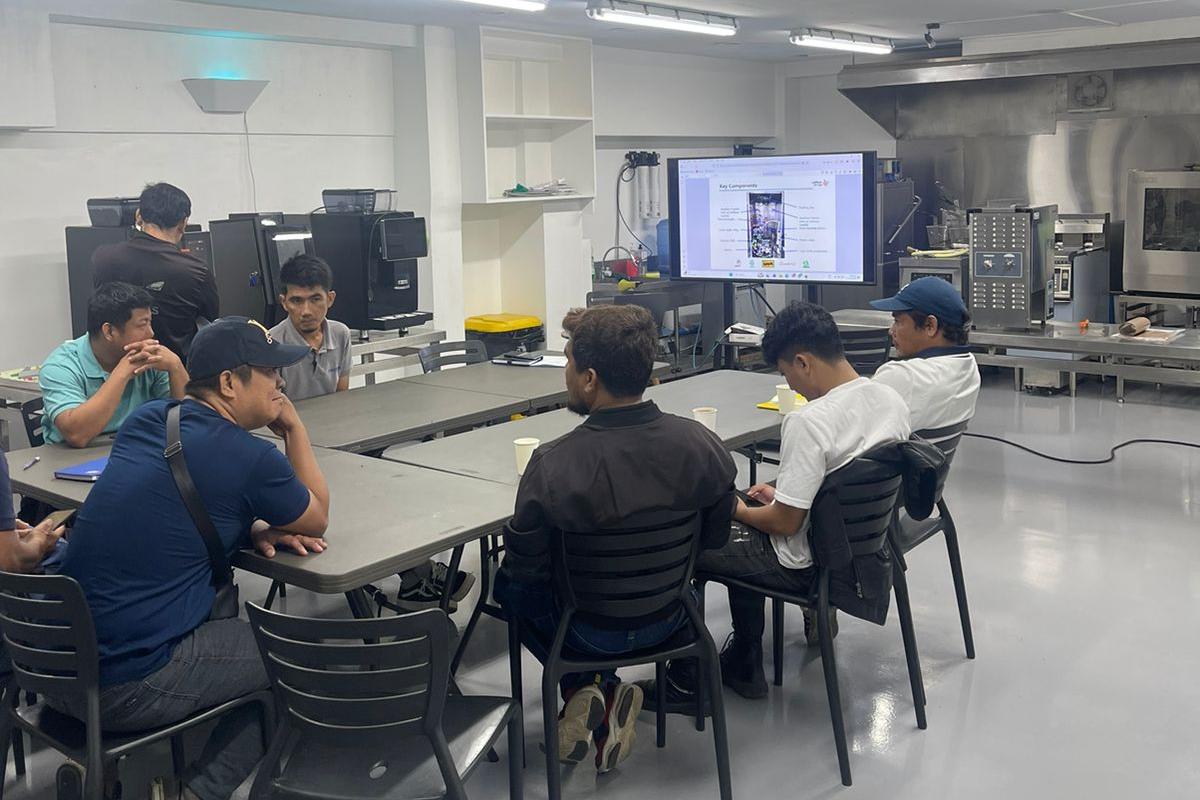Steam-Cabinet-3-door-BGS-3HD
Features
● State of the art technology design
The small fire is equipped with anti-strong airflow and
anti- strong wind technology, which can ensure that it
will not be extinguished in a closed combustion chamber.
Swivel water tank design, no need for blower, water
shortage protection, automatic water filling, and heat
recovery system. Food grade door gasket. Multi-layers
steam tray can steam different type of food at each layer
at the same time.
● Environmentally friendly (High efficiency, low noise
and low CO in exhaust gas)
The thermal efficiency can be up to 90%+. An energy cost
saving up to 50%+. The noise level is less than 60 Db.
The carbon monoxide in flue gas in less than 0.05%.
● Simple operation and safety protection
The flame failure device cuts out gas supply in less than
2 seconds to prevent gas leakage when the flame is not
detected
● Water Inlet:DN15
● Gas inlet: DN25
● Drain outlet: DN25
Description
| Model | # of Shelf | Dimensions (mm) | Gas power |
|---|---|---|---|
| BGS-3HD | 4 | 900 x 950 x 1850 | 71700 btu/h (21 kW) |
| BGS-3HDD | 4 | 1200 x 950 x 1850 | 95600 btu/h (28 kW) |








